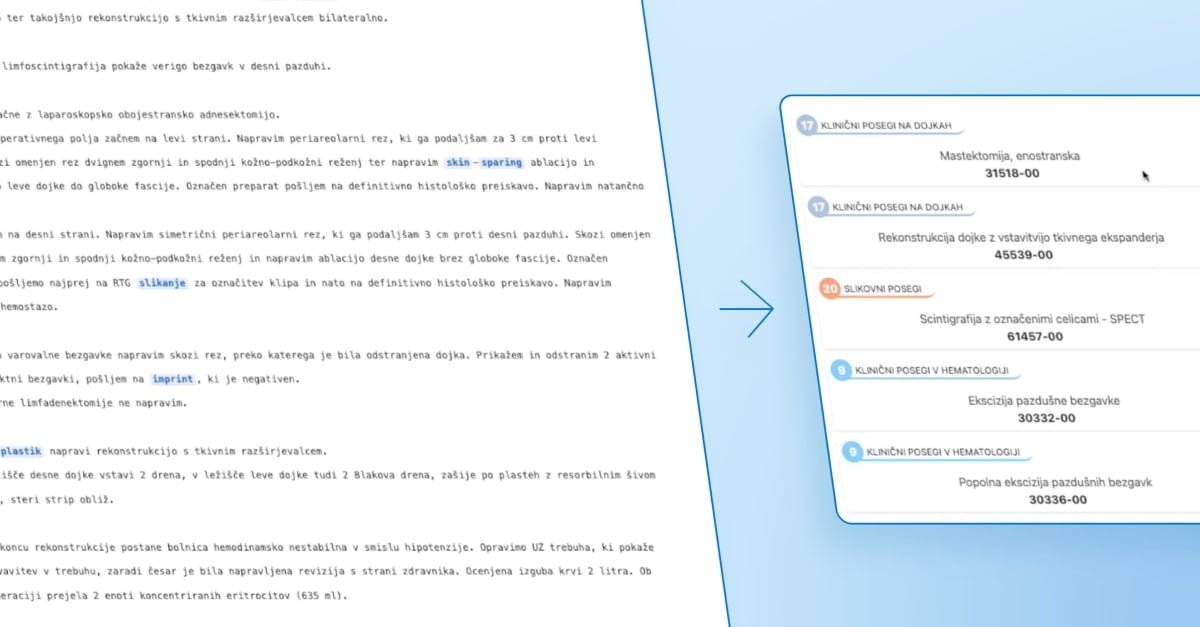Medical coding is a crucial task in healthcare organisations. Traditionally, skilled coders require hours of manual effort to swipe through patient records, identify information, and assign the appropriate diagnostic and procedural codes. Medical Coding Assistant can assist coders in accurately assigning codes.
What sets the Medical Coding Assistant apart is its ability to analyse unstructured medical documents and provide AI-driven suggestions for diagnostic and procedural codes. By building on the power of NLP techniques, the Medical Coding Assistant can accurately identify and understand clinical concepts within these documents, making it an invaluable resource for medical coders.
Code suggestion mechanism to help understand code
One of the key features of the Medical Coding Assistant is its comprehensive code suggestion mechanism, backed by explanations, thus allowing coders to understand why certain codes are recommended. Using AI algorithms, the Assistant suggests suitable diagnostic and procedural codes based on established coding guidelines, regulations, and best practices. These suggestions not only expedite the coding process but also improve accuracy by minimising errors and ensuring compliance with coding standards.
Moreover, the Assistant acts as a second pair of eyes, performing quality assurance checks on coded data to detect inconsistencies, discrepancies, or potential errors. This ensures coding integrity and reduces the risk of compliance audits or billing discrepancies. This transparent process ensures that coders can confidently review and confirm the right codes.
Working with the help of NLP and AI
Natural Language Processing (NLP) and AI algorithms are integrated into the Medical Coding Assistant. NLP is used to parse and make sense of the text in clinical documents, identifying relevant medical terms and their context, and AI algorithms help recognise patterns and connect these terms and appropriate medical codes. This integration allows the Assistant to ‘learn’ from vast data, improving its suggestions over time.
“We developed the Medical Coding Assistant to streamline the complex and time-intensive process of medical coding,” said Robert Tovornik, data scientist who works at Better Innovation Lab together with Matic Bernik and Emil Plesnik. “The primary beneficiaries are medical coders. It reduces their manual workload, allowing them to focus on more nuanced aspects of coding, and redirecting their focus from routine, time-consuming code searches to more complex tasks and cases that require a deeper level of expertise.”
The Medical Coding Assistant’s development exemplifies Better Innovation Lab’s commitment to leveraging cutting-edge AI technology for practical healthcare solutions. “We are excited about the positive impact of the tool’s capabilities and the potential it holds for the future of medical documentation and billing. We aim to continuously improve the Medical Coding Assistant, considering its potential for supporting more languages and coding systems. We approach expansions with care, ensuring the tool remains helpful and effective for medical coders,” also explained Robert Tovornik.
Discover more about Better:
Better transforms healthcare organisations with Better Platform, an open data digital health platform, designed to store, manage, query, retrieve, and exchange structured electronic health records, and Better Meds, electronic prescribing, and medication administration solution. The company focuses on simplifying the work of health and care teams, advocates for data for life, and strives for all health data to be vendor-neutral and easily accessible. It puts organisations in control of their data, workflows, and transformation plans in order to improve patient care. Better has provided solutions across more than 20 markets, and Better Platform securely supports over 30 million patients.

